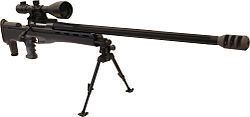Type State-owned enterprise Area served Worldwide Founded 2010 | Industry Defense Headquarters Tbilisi | |
 | ||
Native name Georgian: სსიპ - სსსტც დელტა Key people Shota Kvaratskhelia (CEO) Products Munitions, Small arms, Artillery, Explosives, Combat vehicle, Civil and military aerospace | ||
The State Military Scientific-Technical Center “Delta” (SMSTC Delta) is a Georgian government-owned, autonomous R&D and production center for military and civilian hardware. Headquartered in Tbilisi, Delta was formed on the basis of six scientific research centers and production facilities, histories of which go back to the early 1940s under the former Georgian SSR.
Contents
- Mission
- History
- Functions and scope of activities
- Structural divisions
- Scientific institutes and companies entering into STC Delta
- Mines
- Other items
- Civilian production
- Items for policesecurity forces
- References
Employing several thousand people, Delta is focused on research and development of new military projects, as well as the modernization and production of already established Soviet military hardware. Delta fell under the jurisdiction of the Georgian Ministry of Defense until March 2014, when the government passed the control over the enterprise to the Ministry of Economy and Sustainable Development of Georgia. However the centre was reinstituted to the Ministry of Defence soon afterwards.
Mission
Delta's self-declared mission is to strengthen Georgia through the development of successful military projects, contributing to national defense and supporting the well-being of the civil society.
History
The history of Delta takes its rise from the 1990s. At that time RPG-7 anti-tank grenade launchers, “Kodor” type fragmentation projectiles for RPG-7 grenade launchers, 82 mm and 120 mm mortars and other armament of Georgian production were produced and passed to the armed forces. In 1999 for the first time the center presented its production table of arms and ammunition during a foreign exhibition, namely in Romania at EXPOMIL-99. In 2000-2002, Delta produced low quantities of light assault vehicles DELGA-1 and DELGA-2 that were passed to special operations forces for testing.
Aiming for the establishment of a Georgian military-industrial complex, on July 1, 2010 Tbilisi Aircraft Manufacturing was incorporated to Delta with its movable and immovable assets and intellectual resources.
On May 26, 2011, during the military parade confined to the Independence Day of Georgia, STC Delta showed its first armored vehicles Didgori 1 and Didgori-2 to the public.
On February 25, 2012 the first Georgian infantry fighting vehicle Lazika was unveiled and on March 3, 2012 STC Delta presented the first Georgian multiple launch rocket system, DRS-122.
On April 10, 2012, on the Vaziani training area, flight tests for Delta's new unmanned aerial vehicle were performed. During the military parade on May 26, 2012, STC Delta exposed nearly the full list of weapons and heavy vehicles of its research and production. During 2013, for the purpose of increasing competitiveness and production optimization, a wide range of reforms and modifications were conducted. As a result of this the company came into the world arms market.
On January 28, 2014, STC Delta introduced three new items: anti-hail systems for civil use, a command and communications vehicle developed on the basis of armored vehicle Didgori and 12,7x108mm caliber Anti-materiel rifles.
On February 10 of the same year, on a training area for special operations forces Deltas newly developed ballistic body armors and helmets were tested in front of military and civil representatives of the Georgian government, as well as foreign attaches and mass media.
Renewed, “Delta” presented part of its products on large-scale international exhibition of defense industry SOFEX 2014 that was held in Jordan on July 6–8, 2014. Among presented exhibits, there were body armors, helmets, antitank mines RD-7 and other products.
On May 26, 2014, on the military parade in Tbilisi, STC Delta exhibited a renewed list of products, namely: an upgraded version of the BRDM-2, three modifications of 12,7 mm countersniper rifles, pistols, cartridges, optical sighting devices, body armors and other items.
